Art Fairs
Galleries Report a Mixed First Day at Art Karlsruhe
Only Modern art from Germany was changing hands.

Only Modern art from Germany was changing hands.

Henri Neuendorf


Art Karlsruhe brings together over 200 galleries from 13 countries.
Photo: Art Karlsruhe via Facebook
The 13th edition of Art Karlsruhe kicked off yesterday, bringing 211 galleries from 13 countries to the small provincial city. The first day drew numerous visitors from across the region, as well as collectors from around Germany, nearby Alsace, and Switzerland.
Local resident and star artist Markus Lüpertz was walking around the fair and was spotted inspecting his works displayed at Swiss gallery Henze & Ketterer.
Over the years, the fair has developed a reputation as a strong proponent of German Expressionism, Impressionism, and Modern art. Artists such as Ernst Ludwig Kirchner, Erich Heckel, Willi Baumeister, and Fred Thieler dominated the displays, while German ZERO artists Heinz Mack and Günther Uecker were also well represented.
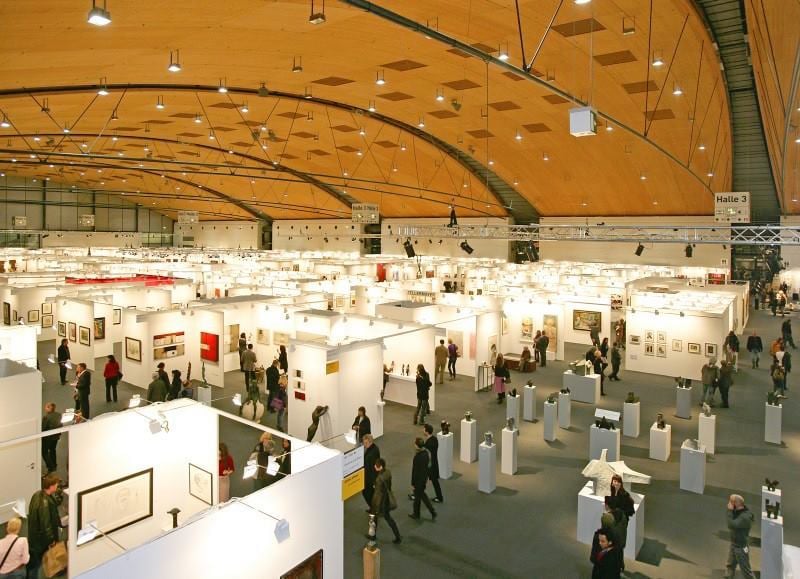
The fair attracts many regional German galleries.
Photo: Art Karlsruhe via Facebook
Despite the big names, however, both the quality of works and the price point were relatively low. A collector who spoke to artnet News on the condition of anonymity said that Art Karlsruhe primarily serves Germany’s Mittelstand; small and medium-sized business owners that “are able to spend €15,000 to €20,000 on an artwork to hang over the mantlepiece.”
He criticized the fair’s vetting process for admitting too many low-quality galleries, and called for a complete overhaul of the fair to attract international, high net worth collectors.
But the fair’s newest member of the selection committee (and daughter of the aforementioned painter), Anna Lüpertz, founder of AJL Art, Berlin insisted that fairs like Art Karlsruhe are a crucial component of the German art market. “The periphery is incredibly important for the German art world. If we only had Berlin, Munich, and Frankfurt then the whole system wouldn’t work,” she said, citing Germany’s numerous Kunstvereine—small, independent art institutions, often located in provincial cities as an example.
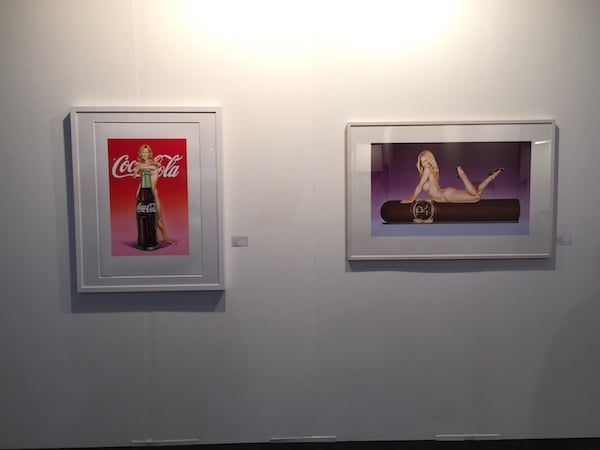
Mel Ramos at Jeanne, Munich.
Photo: Henri Neuendorf
She added, “Karlsruhe is particularly interesting because of the ZKM [Center for Art and Media], which is one of the leading institutions in the world for media art. In terms of the market there is also lot of interest, there are lots of good collections in close proximity, and a clientele that has the means to acquire art.”
The layout of the fair is split into four separate halls. Hall 1 is dedicated to prints and photography, hall 2 and 3 are dedicated to Postwar and Modern art, and hall 4 is dedicated to contemporary works.
Print gallery Jeanne, from Munich, was showing prints by the likes of Mel Ramos, Russel Young, Ed Ruscha, Julian Opie and Tom Wesselmann. Director Jacqueline Hoffman said, “We’ve already had some sales and lots of interest and reservations,” although she declined to discuss figures. “If we sell everything that is on reserve I will be very happy,” she added.
Meanwhile, in exhibition hall 2, Jochen Meyer of Meyer Riegger gallery, with branches in Karlsruhe and Berlin told artnet News, “The prerequisites [of Karlsruhe] are good. There are good art schools and a broad collector base.” Though he admitted that the German scene was becoming increasingly centralized. “There’s no other place than Berlin really,” he explained.
In terms of sales, Meyer—who was showing works by Franz Ackermann, Meuser, and Robert Janitz—said that there was a lot of interest but it was too early to discuss sales.
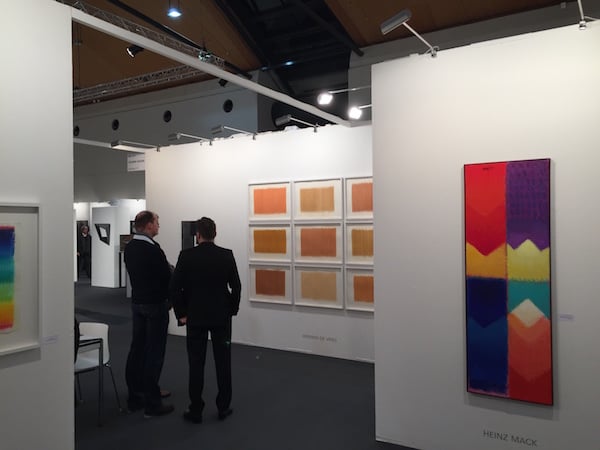
Galerie Geiger, Konstanz.
Photo: Henri Neuendorf
One of the best-curated stands at the fair was at Galerie Geiger’s booth. The Konstanz-based gallery was showing works by 2015 Venice Biennale participant Herman de Vries, Christian Megert, and German ZERO artist Heinz Mack.
“We always get a lot of compliments but we would benefit from the increased quality of the entire fair,” gallerist Stephan Geiger told artnet News.
He added that they hadn’t done any business yet but that he was confident of making sales by the end of the week when collectors have had the opportunity to make up their minds.
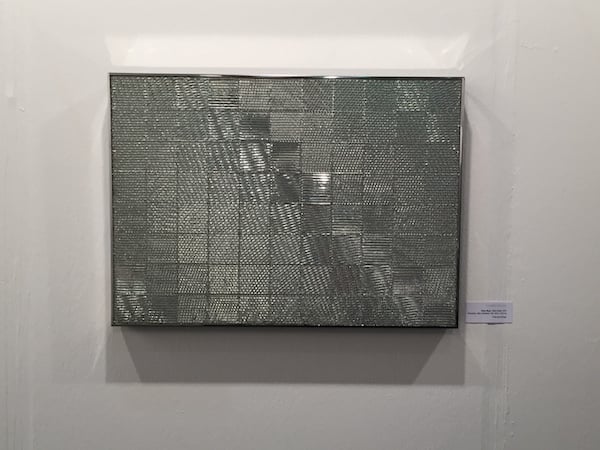
Heinz Mack at Galerie Geiger, Konstanz.
Photo: Henri Neuendorf
It seems that all the early business was being done in hall number 3, which is dedicated to Impressionist, Expressionist and Modern art; unsurprisingly perhaps, because that is the genre that Art Karlsruhe’s reputation is built upon.
Gallerist Harry Schlichtenmaier of Galerie Schlichtenmaier, Stuttgart reported a strong first day. He sold an Ernst Wilhelm Nay painting for €60,000; an H.A.P. Grieshaber for €25,000; a small Georg Karl Pfahler canvas for €13,500, and a Lothar Quinte painting, bought by a museum for €20,000. Schlichtenmaier added that he was also in the middle of negotiations over the sale of a large wall piece by Thomas Lenk.
Galerie Michael Werner, one of the most prestigious exhibitors at the fair, brought a range of fantastic works, including such highlights as a large canvas by David Salle, a work by A.R. Penck, and a Markus Lüpertz painting. The gallery was not prepared to be drawn into discussions over sales. However, there were red stickers next to a small Cezanne and a painting by Per Kirkeby, indicating that they’ve most likely changed hands.
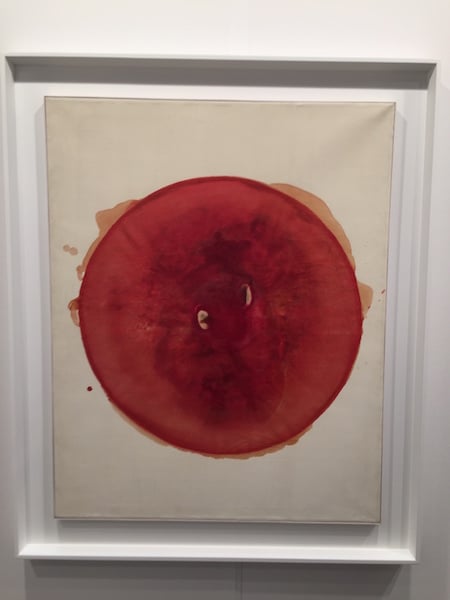
Otto Piene at Galerie Ludorff, Düsseldorf.
Photo: Henri Neuendorf
Nearby, Galerie Ludorff from Düsseldorf was showing works by Otto Piene and Ernst Wilhelm Nay. Gallerist Rainer Ludorff looked pleased with the first day’s sales. He told artnet News that he sold works by Jerry Zeniuk and a sculpture by Katharina Grosse. “Galleries like ours who deal in the higher end of the market are always likely to start slow at fairs like Art Karlsruhe,” he said. “People want to give a purchase some thought, sleep on it and maybe come back the next day.”
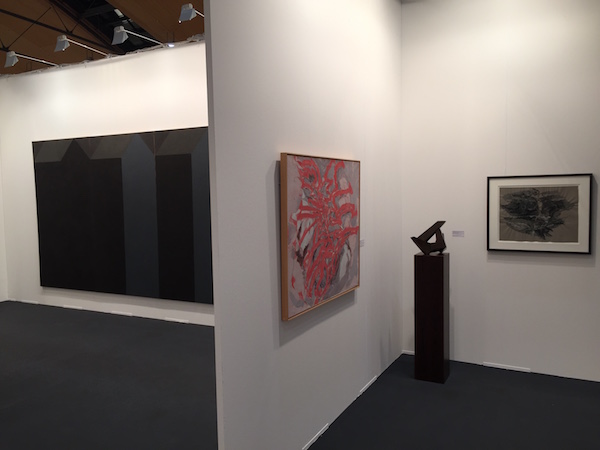
Galerie Utermann, Dortmund.
Photo: Henri Neuendorf
The same rang true for Galerie Utermann from Dortmund. With two large works by Horst Antes priced at €225,000 and €290,000, an Abraham David Christian bronze for €108,000, and an Ernst Ludwig Kirchner for €62,000, collectors took their time to mull over any potential purchases. Director Karin Schulze-Frieling told artnet News that despite not making any sales yet, she was “surprised by the quality of collectors,” and “happy to see some familiar faces.”
Art Karlsruhe takes place from February 17–21.